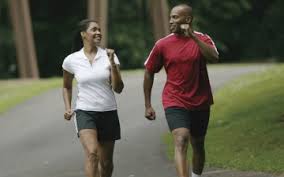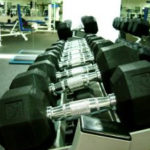 Running is a great activity that requires little external equipment. Running improves your cardiovascular system, decreases your potential for problems with diabetes, stroke and heart attack and helps you to maintain a normal weight. And, with a good pair of shoes and shorts you are ready to start this whole new activity.
Running is a great activity that requires little external equipment. Running improves your cardiovascular system, decreases your potential for problems with diabetes, stroke and heart attack and helps you to maintain a normal weight. And, with a good pair of shoes and shorts you are ready to start this whole new activity.
A proper fit for running shoes is important to find to ensure the health and well being of your feet, legs and hips. Without the correct cushioning or function for your feet you can be placing your legs into incorrect positioning with every pounding step you take. A proper fit for running shoes is found in the function of your foot and hips.
The purpose of any athletic shoe is to protect the foot from the different stresses of the sport. This protection helps the athlete to achieve the maximum potential with the lowest possible risk of injury. Whether the athlete is a competitive elite athlete or weekend warrior the need for sport specific shoes and protection remains the same. The only difference is the amount of pounding the shoes may take.
The best running shoe for an average runner has a proper fit. There are no differences in the fit of the shoe but rather there are differences in the function of the shoe. If you are sprinter the shoe is built differently than if you are a marathon runner.
The build of a running shoe begins with a strong last. The last of a shoe is the base of the shoe upon which the rest is built. The heel should have a broad base and a height of no greater than 4 cm. A heel wedge may increase the ability of the shoe to take the cushion from the Achilles tendon it also forces the foot further forward and places more pressure against the forefoot.
The heel counter should be rigid and durable. This is the part of the shoe that keeps your foot from sliding up and down in the shoe while walking or running. The outersole is the rubber on the base of the shoe. Those outersoles that are waffled are better in the grass while rippled soles give better traction on cement and pavement.
 The midsole is the most important part of the shoe. This part of the shoes is what changes depending upon the biomechanical function of the foot. The midsole controls excessive foot motion. This has implications for people who pronate, supinate or have a normal foot position. The cushion that the midsole provides breaks down over 400-600 miles.
The midsole is the most important part of the shoe. This part of the shoes is what changes depending upon the biomechanical function of the foot. The midsole controls excessive foot motion. This has implications for people who pronate, supinate or have a normal foot position. The cushion that the midsole provides breaks down over 400-600 miles.
A proper fit for running shoes doesn’t depend upon the size on the outside of the box but rather how the shoe fits the foot. Many of the manufacturers of running shoes have different ideas about how the size matches up to the number on the outside of the box. What is most important is that the shoe fits at the heel, across the midfoot and at the toes.
There is no breaking in period for running shoes, or at least there shouldn’t be. Running shoes should fit right out of the box. They won’t feel better after several miles – they will feel the same. Make sure they fit directly out of the box.
Shoes are built for three different types of feet. There are runners who have a normal gait, who pronate and who suppinate. Some professionals call supination under pronation but the results are the same. In an athlete who has a normal gait the outside part of the heel makes the initial contact and rolls inward about 5% coming in complete contact with the ground and providing a good distribution of the impact.
When an athlete over pronates the outside of the heel makes the initial contact but then the roll goes well over the ideal 5%. This has an impact on the ability of the foot and ankle to stabilize the body and provide adequate shock absorption. At the end of the cycle it is the first and second toe that do the majority of work pushing off.
During supination or underpronation the outside of the heel makes contact but the inward motion of the foot is under 4%. The force of impact is distributed over a smaller area of the foot and isn’t distributed well. In the push off phase most of the work is done by the smaller toes on the outside of the foot.

Now that the manufacture of the shoe and the type of running styles have been covered a proper fit for running shoes can be thoroughly discussed. Before trying on new shoes have your foot sized. Don’t assume you know your size. The size of your foot can change as you grow older or have lost or gained weight – including have delivered a baby.
Try to go to the store at the end of the day when your feet are their largest. Allow about ½ an inch from the end of the second toe to the end of the shoe. Since your foot continues to slide forward during the running stride, even after the shoe has stopped, this allows for movement and will decrease the risk of blackened toenails after a long run.
If you have orthotics that you use for running, bring them. Most of today’s running shoes have inserts that are removable. You can determine the fit of your orthotics in the shoe at the store before being disappointed at home.
Go to a good running store to have your feet fitted and measured before investing your time and money in a shoe that may prove to be more of a problem. Most shoes were built for the three different types of runners and the running store personnel have been trained to evaluate your stride and recommend shoes that are appropriate for your running needs.
The best shoe for the average runner is really not much different from the shoe for the elite, competitive runner. Both runners are looking for a shoe that provides great support and cushioning that also accounts for their particular biomechanical style of running. So while you may think your needs are different than those of other elite athletes they aren’t. Protect your feet and legs so that they will give you years of running!
Resources:
Runners World: How to Buy the Right Running Shoes
http://www.runnersworld.com/running-shoes/how-buy-right-running-shoes
Running Warehouse: Running Shoe Fit Tips
http://www.runningwarehouse.com/learningcenter/fittips.html
Asics: Finding the Right Fit
http://www.asics.co.uk/running/knowledge/finding-the-right-fit-a-guide-to-running-shoes/
Active: Finding the Perfect Running Shoe
http://beta.active.com/running/articles/finding-the-perfect-running-shoefor-you
Cool Running: A Running Shoe Guide for Dummies
http://www.coolrunning.com/engine/2/2_1/a-running-shoe-guide-for-.shtml


Leave a Reply